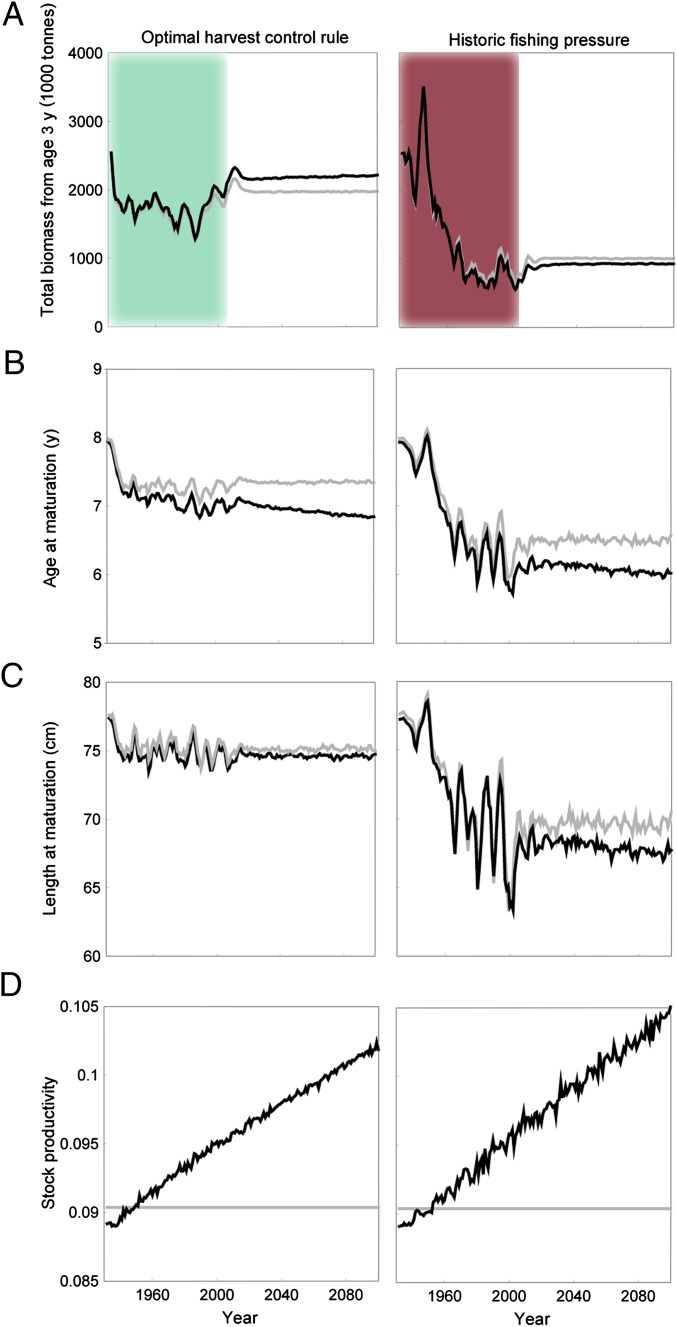Fig. 2.
The first scenario (Left) is based on an optimal harvest control rule (HCR) maximizing fleet profit (green shading shows the period for which we have data), and the second scenario (Right) is based on the observed historic fishing mortalities for 1932–2005 (red shading), and from 2006 onward follows the average fishing mortality for 1946–2005. For each scenario, the emerging properties for an evolutionary model (black) are compared with those of the corresponding nonevolutionary model (gray). (A) Total biomass from age 3 y is lower in the evolutionary model when fishing mortality is high, but higher in the evolutionary model when the optimal HCR is used. (B) Predicted age at maturation and (C) length at maturation is lower in the evolutionary model than in the nonevolutionary model. The historic scenario predicts age and length at maturation to fall to between ages 6 and 7 y, and 60 and 70 cm in 2005, in agreement with the observed data. (D) Stock productivity, i.e., mean gonad mass divided by total spawning stock biomass, increases when evolution occurs, and more if fishing mortality is high.

